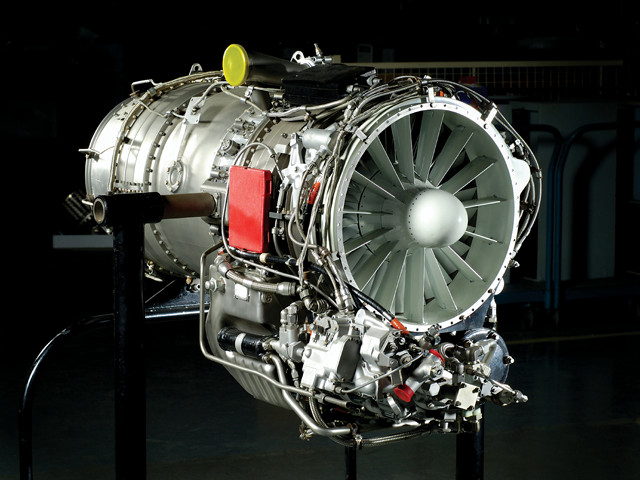
by U.S. Geological Survey Thursday, June 14, 2018
Kim B. Shedd, a mineral commodity specialist for the U.S. Geological Survey, compiled the following information on cobalt, a metal used to power cell phones, make gas turbine engines, and color glass and ceramics.

Cobalt is in gas turbine engines. Credit: © iStockphoto.com/Fertnig
Cobalt is a metal used in numerous commercial, industrial and military applications. On a global basis, the leading use of cobalt is in rechargeable lithium-ion, nickel-cadmium and nickel-metal hydride battery electrodes. Cobalt use has grown rapidly since the early 1990s, with the development of new battery technologies and an increase in demand for portable electronics such as cell phones, laptop computers and cordless power tools.
Superalloys, used to make parts for gas turbine engines, are another major use for cobalt. Cobalt is also used to make catalysts for the petroleum and chemical industries; cemented carbides (also called hardmetals) and diamond tools; corrosion- and wear-resistant alloys; drying agents for paints, varnishes and inks; dyes and pigments; ground coats for porcelain enamels; high-speed steels; magnetic recording media; magnets; and steel-belted radial tires. Cobalt is also used to produce gas to inflate airbags.
In most countries, cobalt is produced as a byproduct of mining other more abundant metals, primarily copper and nickel. One exception is the Democratic Republic of the Congo, where some of the mining is done by tens of thousands of artisanal miners who handpick heterogenite, a cobalt mineral. The top three countries in terms of cobalt reserves are the Congo, where cobalt is in sediment-hosted stratiform copper deposits; Australia, where cobalt is in nickel laterite and sulfide deposits; and Cuba, where cobalt is in nickel laterite deposits.
In 2007, the United States was one of the top three consumers of cobalt. That year, 82 percent of the U.S. cobalt supply came from imports and stock releases of refined cobalt and 18 percent came from domestic or imported scrap. The United States only recovered negligible amounts of cobalt in intermediate products from platinum group metal mining and refining operations in southeastern Montana and lead mining and smelting operations in southeastern Missouri. There were three U.S. mine projects in the feasibility and permitting stages of development that planned to produce cobalt: a cobalt mine and refinery project in Idaho, a nickel-copper mine project in Michigan and a polymetallic mine and refinery project in Minnesota.
For more information on cobalt and other mineral resources, visit http://minerals.usgs.gov/minerals.
World production of refined cobalt was 53,500 metric tons in 2007.
The top seven producers of refined cobalt in 2007 were China, Finland, Canada, Zambia, Norway, Russia and Australia.
The top five sources of cobalt mine production were the Democratic Republic of the Congo, Canada, Zambia, Russia and Australia.
Three countries consumed 65 percent of the world’s cobalt in 2007: Japan, China and the United States.
About half of all cobalt produced is used to make electrodes for rechargeable batteries and superalloys for turbine engine parts.
Cobalt is named after “kobold,” a mythical spirit of Germanic folklore. Medieval miners thought that kobolds poisoned their ores, but the real culprits were the arsenic-bearing cobalt minerals cobaltite and smaltite.
Cobalt oxide has been used to make blue glass since ancient times.
Cobalt has the highest curie temperature of all metals — it maintains its magnetic properties at temperatures as high as 1121 degrees Celsius.
Cobalt-60, made by exposing cobalt to radiation, is used to sterilize medical supplies and kill microorganisms in food.
Vitamin B-12, essential to human health, contains more than 4 percent cobalt.
Cobalt chloride is used to monitor moisture: It is blue when dry and turns pink when exposed to water vapor.
© 2008-2021. All rights reserved. Any copying, redistribution or retransmission of any of the contents of this service without the expressed written permission of the American Geosciences Institute is expressly prohibited. Click here for all copyright requests.